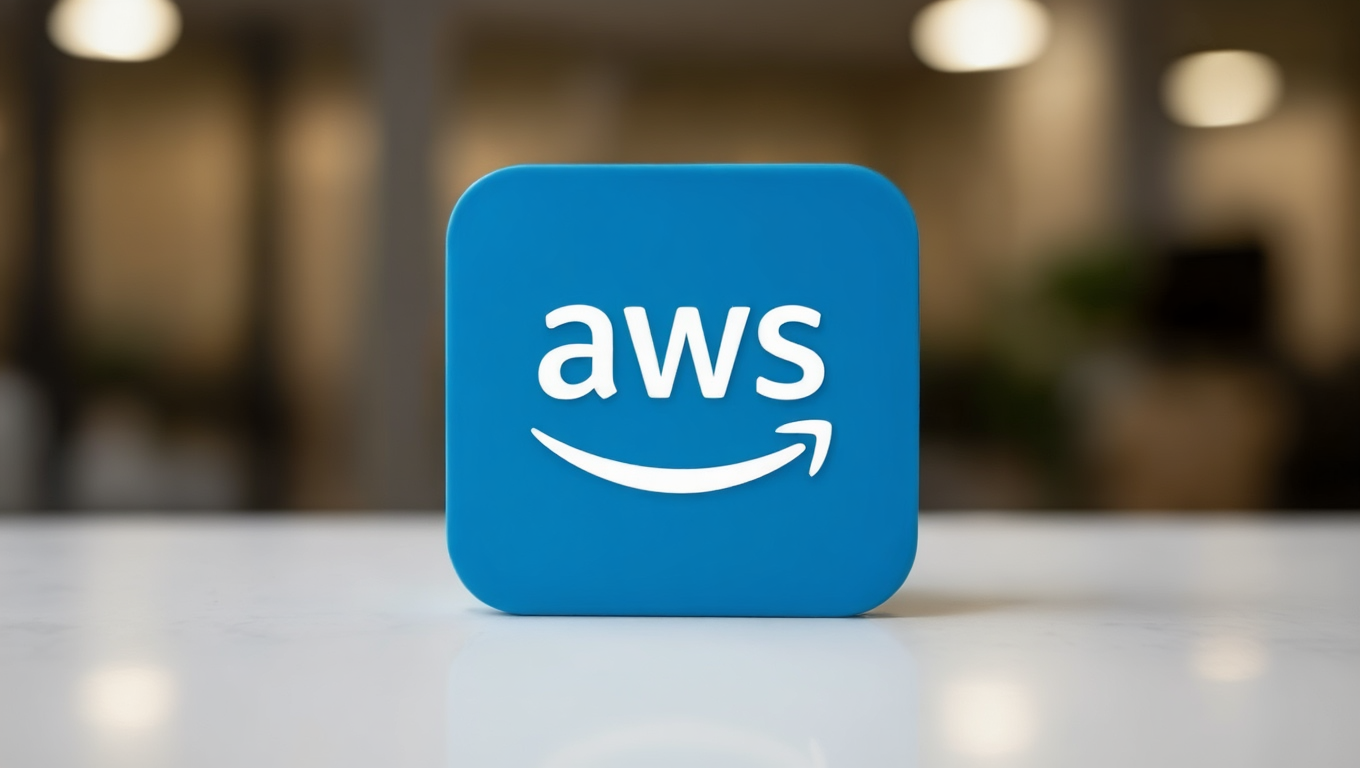⚙️ AWS Outage Impact: Understanding the 82 Affected Services and Why They Matter
Learn how the October 2025 AWS outage affected 82 services — from EC2 and DynamoDB to SageMaker and CloudFront — and why DNS reliability is critical to global cloud operations.

Date: October 20, 2025
Category: Cloud Infrastructure & Reliability
Tags: AWS, Cloud Computing, DNS, Reliability, DevOps, Infrastructure
🧭 Introduction
On October 20, 2025, Amazon Web Services (AWS) faced one of its largest multi-service outages in recent years.
A DNS resolution issue in the US-EAST-1 (N. Virginia) region disrupted or degraded over 80 AWS services, including core infrastructure, databases, compute, and AI tools.
Although AWS has since fully mitigated the issue, the incident highlights just how interconnected the AWS ecosystem is — when one critical layer like DNS fails, dozens of other services feel the ripple effect.
This article explores each impacted AWS service, grouped by category, to understand their purpose and how such an incident can affect real-world applications.
🧩 1. Compute and Container Services
These form the core computational backbone of AWS, running millions of workloads every second.
- Amazon EC2 (Elastic Compute Cloud): Virtual servers in the cloud, used by nearly every AWS customer. Outages impact app hosting, APIs, and backend systems.
- Amazon ECS (Elastic Container Service): Container orchestration for Docker workloads. Dependent on EC2 networking.
- Amazon EKS (Elastic Kubernetes Service): Managed Kubernetes clusters. Relies heavily on DNS for service discovery.
- AWS Batch: Used for batch computing jobs — can fail if EC2 provisioning or container networking is delayed.
- AWS Parallel Computing Service: Optimizes multi-node HPC workloads; impacted when networking or EC2 is degraded.
- AWS Elastic Load Balancing (ELB): Routes traffic to EC2 instances; DNS issues can make endpoints unreachable.
- AWS Lambda: Serverless compute service triggered by events; downtime leads to delayed event processing.
- Amazon GameLift Servers: Manages game server sessions; reliant on network latency and EC2 provisioning.
🗄️ 2. Database and Storage Services
Data systems were among the hardest hit, with several core data planes degraded due to internal DNS issues.
- Amazon DynamoDB: NoSQL database, one of the main services disrupted by DNS failures.
- Amazon RDS (Relational Database Service): Managed MySQL, PostgreSQL, Oracle, and SQL Server databases.
- Amazon Aurora DSQL Service: High-performance distributed SQL database for large-scale workloads.
- Amazon ElastiCache: Caching service (Redis/Memcached); dependency on internal endpoints affected.
- Amazon DocumentDB: MongoDB-compatible database service.
- Amazon Neptune: Graph database for connected data analytics.
- Amazon Redshift: Data warehouse platform used for BI and analytics.
- AWS Database Migration Service (DMS): Enables database replication and migration — DNS issues affect endpoints.
- AWS Storage Gateway: Connects on-premise storage to AWS cloud.
- AWS DataSync: Transfers data between on-prem and AWS; interruptions delay sync jobs.
- Amazon FSx: Managed file systems for Windows, Lustre, and NetApp ONTAP.
- Amazon S3 (via dependent services): Indirectly impacted by service-layer dependencies on IAM and networking.
🕸️ 3. Networking and Security Services
Networking is the circulatory system of AWS — DNS failures can disrupt service discovery, routing, and connectivity.
- AWS VPC Lattice: Manages service-to-service communication inside a VPC.
- AWS NAT Gateway: Handles outbound traffic; degraded during DNS instability.
- AWS Transit Gateway: Connects multiple VPCs across accounts.
- AWS Site-to-Site VPN: Enables secure network links; failures cause disconnections.
- AWS Verified Access: Security access management for private apps.
- AWS Network Firewall: Provides managed network protection; dependent on API calls.
- AWS VPCE PrivateLink: Secure access to services without public IP exposure; internal DNS failure blocks endpoints.
- Amazon CloudFront: Global CDN service; impacted by origin DNS lookups.
- AWS Payment Cryptography: Ensures secure transactions; downtime can block payment authorization.
- AWS Security Token Service (STS): Issues temporary security credentials — critical for API access.
- AWS Identity and Access Management (IAM): Core authentication layer; indirectly affected via DNS dependencies.
- AWS IAM Identity Center: Provides single sign-on across applications.
- AWS Private Certificate Authority (CA): Issues internal TLS certificates; relies on DNS-based validation.
- Amazon GuardDuty: Security monitoring and anomaly detection.
- Amazon Security Lake: Centralized security data lake; relies on CloudWatch event ingestion.
💻 4. Application Integration and APIs
These services manage data flow and application communication across AWS and third-party platforms.
- Amazon API Gateway: API creation and management; DNS failures make endpoints unreachable.
- Amazon AppFlow: Data integration between SaaS apps and AWS.
- Amazon AppStream 2.0: Virtual desktop and application streaming platform.
- Amazon Connect: Cloud-based contact center platform.
- AWS Application Migration Service: Migrates servers into AWS — dependent on EC2 and networking.
- AWS Transfer Family: Secure file transfers (SFTP, FTPS, FTP).
- AWS CloudFormation: Infrastructure as code; API calls may have failed during the incident.
- AWS Config: Resource compliance and inventory tracking.
- AWS Systems Manager (and SSM for SAP): Centralized ops management; relies on internal API endpoints.
- AWS Organizations: Multi-account governance; delays in provisioning.
- AWS Glue: ETL service for data pipelines; DNS failures delay job initialization.
📈 5. Analytics, ML, and AI Services
DNS issues delayed or halted processing in several data analytics and machine learning systems.
- Amazon Athena: Serverless query engine for S3 data.
- Amazon SageMaker: Machine learning model training and deployment.
- AWS HealthLake: Healthcare data analytics and storage.
- Amazon Kinesis (Data & Video Streams): Real-time data ingestion; DNS instability affects stream endpoints.
- Amazon OpenSearch Service: Managed Elasticsearch clusters; internal DNS required for node communication.
- Amazon Managed Workflows for Apache Airflow (MWAA): Workflow orchestration service.
- Amazon Redshift: Data warehousing; dependent on IAM and VPC endpoints.
- Amazon Polly: Text-to-speech service.
- Amazon Transcribe: Speech-to-text; affected by Lambda and API Gateway.
- Amazon Q Business: Enterprise AI assistant; affected by API latency.
- Amazon Kendra: Intelligent search service.
- Amazon Pinpoint: Customer engagement analytics; relies on API integrations.
- Amazon Chime: Real-time communications platform.
📩 6. Messaging, Email, and Queue Services
- Amazon Simple Queue Service (SQS): Message queuing for distributed systems; DNS issues disrupt message delivery.
- Amazon Simple Email Service (SES): Cloud-based email delivery; affected by DNS MX lookups.
- Amazon MQ: Managed message broker (ActiveMQ/RabbitMQ).
- Amazon Managed Streaming for Apache Kafka (MSK): Data streaming and event pipelines; heavily reliant on DNS brokers.
🧠 7. Monitoring, Logging, and Developer Tools
- Amazon CloudWatch: Centralized monitoring; metrics delayed during the outage.
- AWS CloudTrail: Logs API activity — backlog observed during recovery.
- AWS CloudFormation: Delayed provisioning and rollback events.
- AWS Health: Tracks service health globally.
- AWS Elemental: Media encoding and streaming pipeline; affected by underlying API disruptions.
📬 8. Business and Productivity Services
- Amazon WorkSpaces: Virtual desktop service for remote work.
- Amazon WorkMail: Secure business email platform.
- AWS End User Messaging: Messaging framework for notifications.
- AWS B2B Data Interchange: Business data exchange across partners.
- AWS Directory Service: Integrates with Microsoft Active Directory; DNS-based.
🧭 The Common Thread: DNS Dependency
Every AWS service — from EC2 to SageMaker — ultimately relies on DNS resolution to communicate internally and externally.
When DNS fails, internal services can’t find each other, APIs break, and automation halts.
Even though the AWS cloud is globally distributed, the US-EAST-1 region remains a single point of dependency for many global services, making DNS reliability critical.
🧩 Lessons for Cloud Architects
- Never depend on one region: Always replicate workloads to multiple AWS regions.
- Implement DNS redundancy: Use external resolvers or secondary name services.
- Test failover regularly: Simulate DNS outages to measure recovery time.
- Monitor internal service health: Use both CloudWatch and external observability tools.
- Design for degradation: Build apps that handle temporary DNS failures gracefully.
🧭 Conclusion
The October 2025 AWS outage showed how a single DNS-level fault can ripple through 82 interconnected cloud services, briefly disrupting critical systems across the internet.
But it also proved AWS’s strength in recovery — the issue was identified, mitigated, and largely resolved within hours.
For developers, architects, and DevOps engineers, this is a clear reminder:
The reliability of your system is only as strong as its lowest-level dependency — and often, that’s DNS.
If you want to deepen your understanding of cloud reliability, AWS architecture, and DevOps best practices,
visit 👉 dargslan.com — your trusted source for in-depth IT learning and cloud engineering education.




